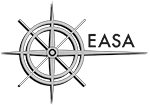Early Assessment and Support Alliance
EASA Services
EASA Clinical Teams Provide These Services:
Services Offered By EASA
EASA works closely with family members and others who are supportive of the individual to help them succeed.
Engagement
Outreach and Engagement
Assessment
Assessment, Diagnosis and Treatment
Educating and Supporting
Educating and supporting EASA participants and graduates
Support
Medication Support
Early Assessment and Support Alliance
EASA Is A Transitional Program, Serving People For Approximately Two Years.
The program continues to evolve based on feedback, experience and availability of new methods. For example, EASA is now integrating methodology from evidence-based “toolkits” developed by the U.S. Substance Abuse and Mental Health Administration (SAMHSA).
Toolkits being implemented by EASA include multi-family groups, illness management and recovery, dual diagnosis treatment (chemical dependency and psychosis), and supported employment.
Early Assessment and Support Alliance
Phases of Care
The EASA clinical team works with people in five phases:
Phase 1
- Outreach to individual and family/primary support system
- Get to know the individual and family/primary system
- Provide comprehensive assessment
- Complete needed medical tests (as soon as possible!)
- Begin treatment for identified medical conditions
- Identify strengths, resources, needs and goals
- Begin multi-family group process
- Stabilize the situation
- Provide support and education to the individual
- Provide opportunities for peer involvement, physical fitness
- Assess need for ongoing services from EASA
Phase 2
- Provide more extensive education
- Continue treatment with EASA Team
- Address adaptation issues
- Refine and test the relapse plan
- Engage in alcohol and drug treatment if needed
- Continue multi-family group process
- Move forward proactively on living and/or vocational goals
- Identify and establish necessary accommodations
- Identify and develop stable long-term economic
- Provide opportunities for peer involvement, physical fitness
Phase 3
- Continue multi-family group, vocation support and individual treatment
- Continue to work toward personal goals
- Develop a relapse prevention plan
- Develop long-term plan
Phase 4
- Maintain contact with EASA Team
- Continue multi-family group
- Participate in individual and group opportunities
- Establish ongoing treatment relationship and recovery plan
Phase 5
- Continue multi-family group (in some situations)
- Continue with ongoing providers
- Invitation to participate in events and mentoring
- Invitation to participate in EASA planning/development
- Periodic check-ins and problem solving as needed.
